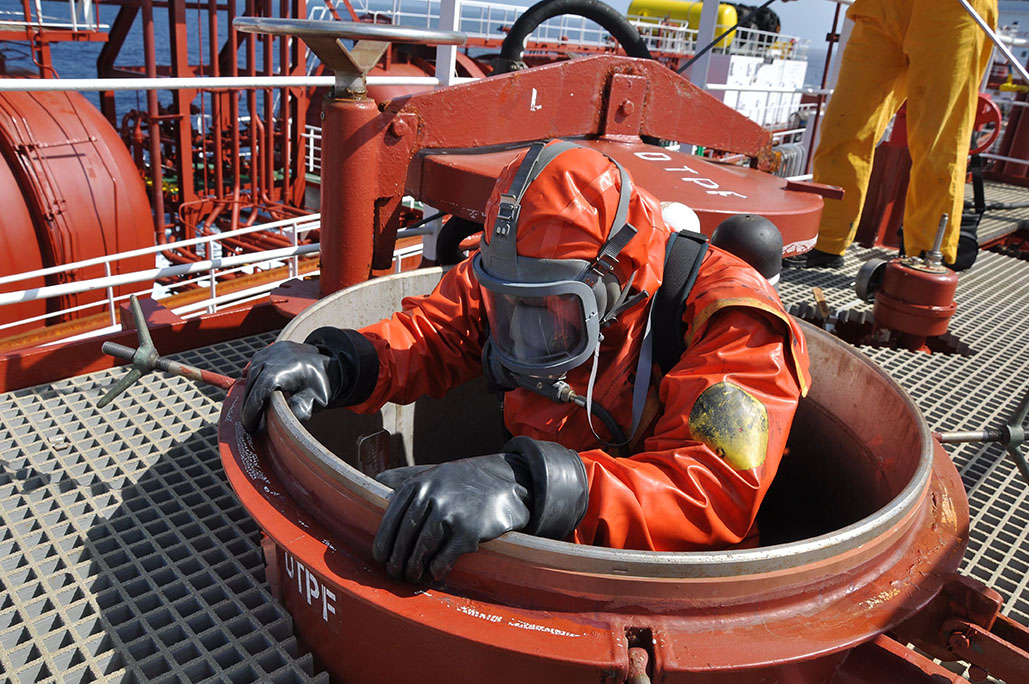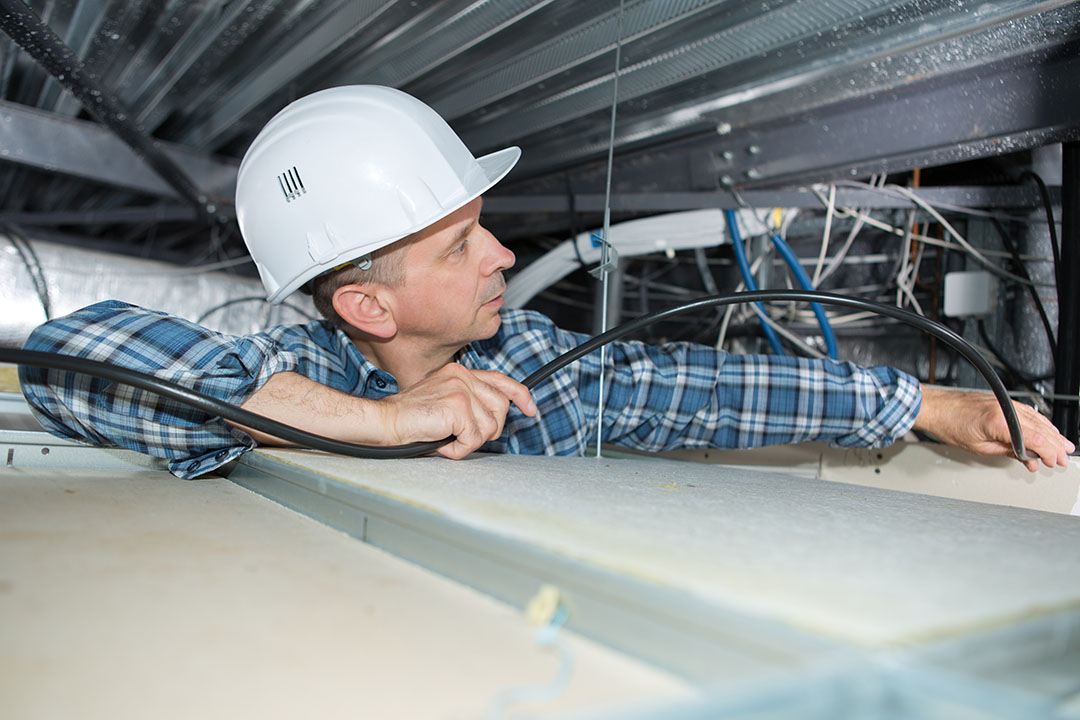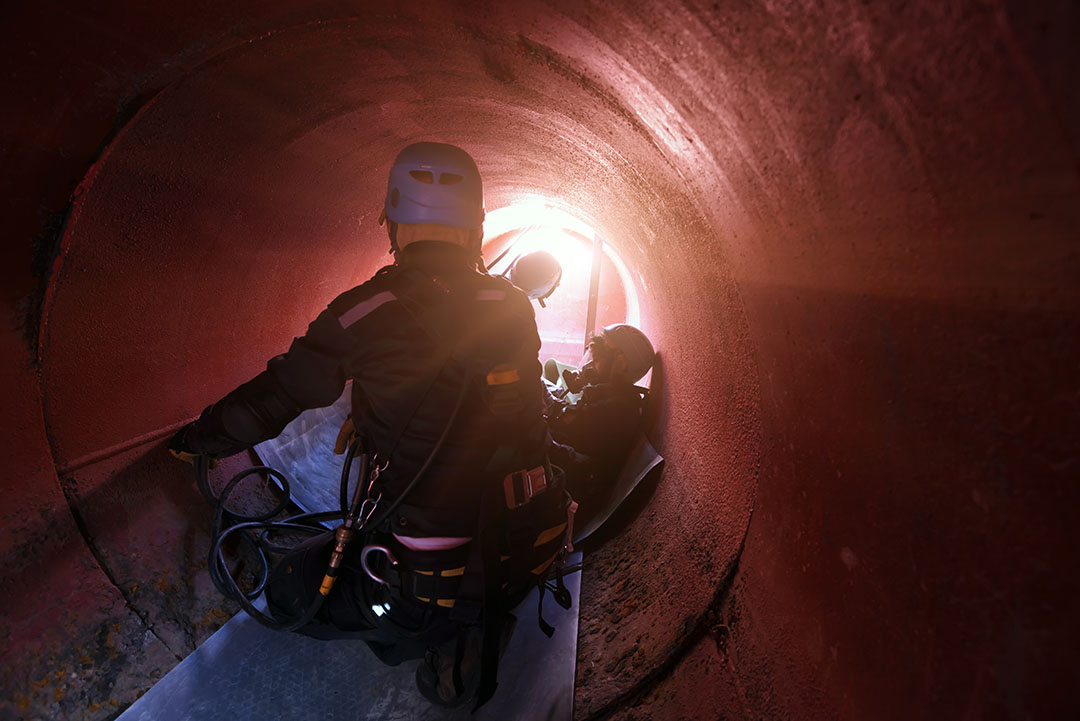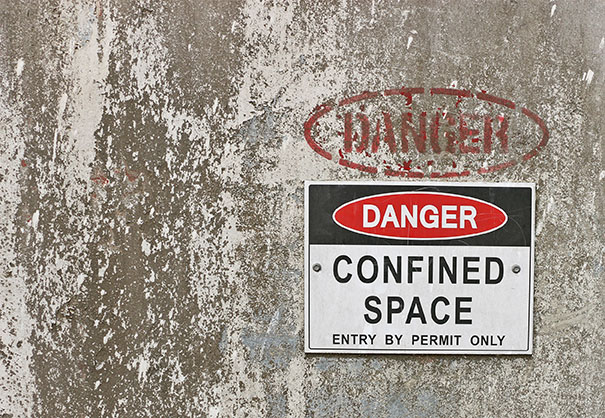
What is a confined space?
Confined spaces include vaults, tanks, storage bins, pits, diked areas, vessels, silos and other similar areas. To qualify as a true confined space, an area must meet three requirements. It must:
- Be large enough for an employee to enter and perform assigned work in
- Not be designed for continuous occupancy by the employee
- Have limited or restricted means of entry or exit
There are two different types of confined spaces in the workplace: non-permit confined spaces and permit-required confined spaces. Non-permit confined spaces are spaces that don’t contain or have the potential to contain any hazards capable of causing death or serious physical harm. Permit-required confined spaces pose a more serious risk to workers’ health. To qualify as a permit-required space, a confined space must have at least one of four characteristics:
- Contains or has the potential to contain a hazardous atmosphere
- Contains a material that could engulf someone who enters the space
- Has an internal configuration that could cause a worker to become trapped or asphyxiated
- Contains any other recognized serious safety or health hazards
What are the hazards associated with confined spaces?
Hazardous atmospheres are the biggest dangers that workers will face in permit-required confined spaces. A hazardous atmosphere is any atmosphere that may expose workers to the risk of death, injury, acute illness or incapacitation, or reduce their ability to escape unaided from a permit-required confined space. Hazardous atmospheres can be caused by flammable or combustible materials in the air, too much or too little oxygen in the air, or chemical substances in the air.

Confined spaces that contain liquids or flowable solids like grain, corn, or coal pose an engulfment hazard. Engulfment occurs when a person is pulled under the surface of a liquid or flowable solid, and can result in death from strangulation, constriction, or crushing. Engulfment is particularly common in agricultural facilities that store large quantities of grain, spices and other foods in silos and other confined spaces.
Small entrances can make it difficult for rescuers with SCBA oxygen tanks to enter. Limited ventilation can allow gases, vapors and fumes to build up, creating hazardous atmospheres that wouldn’t form in an adequately ventilated, open space. Even household cleaning products can give off deadly fumes in a confined space. Electrical equipment can cause electric shock or pull workers into machinery if it is not properly shut down before entry.
What steps should my facility take to prepare for a permit-required confined space entry?
If workers must enter a permit-required confined space, you must develop and assign entry permits for the confined space. An entry permit is a written document that is posted by all entrances to a confined space. It will detail who is allowed to enter the space, atmospheric testing results, known hazards, control measures, emergency and rescue services, the date and duration of entry, acceptable entry conditions, communication procedures, special equipment needed, and more. The entry permit must be signed by the supervisor who authorizes entry and the person who conducts atmospheric testing.
Before work in a confined space can begin, you must conduct extensive atmospheric testing to make sure that employees can safely enter. Your facility must log all test results on the entry permit posted outside the entrance to the confined space and continue to monitor the air while workers are inside the space. To prevent fires and explosions in confined spaces, the concentration of flammable gases, vapors and mists in the air must be less than 10 percent of their LFLs. Fires and explosions in confined spaces are particularly dangerous because smoke can quickly fill the spaces, and limited or restricted exits, such as small exits or exits that require workers to climb a ladder to reach, can be difficult to get to in the event of a fire.
Before any work in a permit-required confined space begins, you must take special precautions to ensure worker safety. Your facility must correct all known hazards and create a system for identifying new hazards. Before the initial work assignment begins, your facility must train all workers who will enter permit-required confined spaces. You must give additional training when the job duties change, if the permit space presents any new hazard, or if a worker shows signs of not understanding safety procedures. Your facility must keep records of all training and provide them to employees and their authorized representatives if requested.
Summary
Dangerous conditions can be heightened in confined spaces due to their atmospheric conditions and limited means of escape. Small entrances, lack of adequate ventilation, and hazardous atmospheres can pose serious and potentially fatal risks to workers. To lessen the likelihood of injury and death in confined spaces, your facility should properly follow all confined space permit regulations and train workers on safe confined space entry procedures.
For more information, click the following links:



